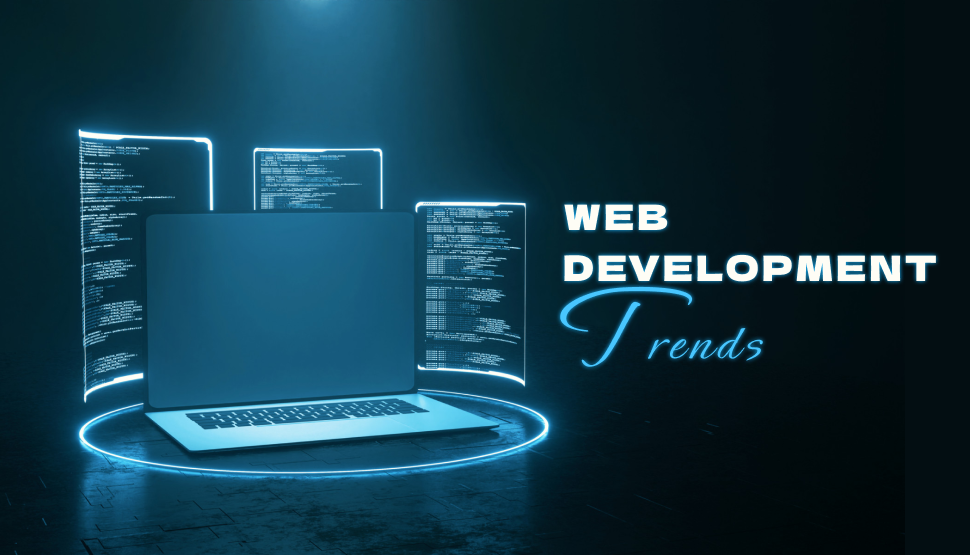I'm always excited to take on new projects and collaborate with innovative minds.
PP Trade Centre, 110 & 111 1st Floor, Netaji Subhash Place
I'm always excited to take on new projects and collaborate with innovative minds.
PP Trade Centre, 110 & 111 1st Floor, Netaji Subhash Place
Web development has come a long way since the early days of static HTML and basic CSS. Today, it's a dynamic, ever-evolving field, driven by new technologies, frameworks, and innovative ideas that shape how we interact with the internet. Whether you're an experienced developer or just getting started, staying updated with the latest trends is essential to mastering the art of web development.

Jamstack, which stands for JavaScript, APIs, and Markup, has been gaining significant traction in recent years. This architecture decouples the front end from the back end, resulting in faster load times, enhanced security, and a better developer experience.
Speed: Jamstack sites are pre-rendered and served via Content Delivery Networks (CDNs), making them incredibly fast.
Security: With no traditional server-side logic or databases exposed to the user, the attack surface is drastically reduced.
Scalability: Since content is served from CDNs, scaling is as simple as distributing traffic across multiple servers.
Popular tools and frameworks in the Jamstack ecosystem include:
Static Site Generators (SSGs): Next.js, Gatsby, Hugo
Headless CMSs: Contentful, Sanity, Strapi
APIs: GraphQL, REST APIs
Serverless computing is changing the way developers build and deploy applications. Instead of managing server infrastructure, developers can rely on cloud services that automatically scale based on demand.
Cost Efficiency: You only pay for the actual usage of resources (compute, storage, etc.) rather than maintaining a whole server.
Scalability: Serverless platforms like AWS Lambda and Google Cloud Functions scale automatically with traffic demands.
Focus on Code: Developers can focus purely on application logic rather than worrying about server management.
Popular serverless platforms:
AWS Lambda
Google Cloud Functions
Netlify Functions
Progressive Web Apps are websites that function like native mobile apps. PWAs combine the best of web and mobile apps, providing offline capabilities, push notifications, and smooth interactions.
Offline Functionality: PWAs can work even when the user is offline, thanks to service workers that cache key assets.
App-like Experience: PWAs load instantly and offer app-like features, such as push notifications and full-screen modes.
No App Store Hassle: Since PWAs are accessed through the web, you don’t need to deal with app store submissions, updates, or restrictions.
Workbox: A library for creating reliable, offline-first PWAs.
Lighthouse: Google's tool for auditing and improving the performance of PWAs.
Single Page Applications (SPAs) have become a dominant approach in modern web development. SPAs allow for seamless, dynamic user experiences by loading content dynamically, instead of reloading entire pages.
Faster Interactions: SPAs load only the necessary content rather than entire new pages, leading to faster transitions.
Rich User Experience: SPAs often resemble desktop applications in terms of interaction, providing a smooth, fluid experience.
Reduced Server Load: Since SPAs load resources once and make API calls for updates, they reduce server load.
Popular SPA frameworks:
React
Vue.js
Angular
CSS continues to evolve, and the introduction of Flexbox and CSS Grid has revolutionized the way developers build layouts.
Flexbox is great for creating one-dimensional layouts (either rows or columns), offering greater control over alignment, spacing, and distribution of elements.
CSS Grid allows for two-dimensional layouts, making it easier to design complex grid-based structures without relying on floats or external frameworks.
By mastering Flexbox and Grid, developers can create responsive and elegant designs without the need for complex JavaScript or external libraries.
To increase productivity, modern web developers often rely on automation tools to streamline tasks such as compiling code, minifying assets, and running tests.
Some essential tools in this space:
Webpack: A powerful bundler that compiles and bundles assets like JavaScript, CSS, and images.
Parcel: A fast and zero-config web application bundler.
Gulp & Grunt: Task runners that automate repetitive tasks, such as code compilation and image optimization.
NPM Scripts: A simple way to define build and test processes directly in your project's package.json file.
With the rise of mobile internet usage, designing with a mobile-first approach has become a must. Mobile-first design involves building the mobile version of a website or app first, and then progressively enhancing it for larger screens.
This approach ensures that:
Performance is optimized for slower mobile networks.
User experience is prioritized for the device most people will use to access the site.
SEO benefits since search engines prioritize mobile-friendly websites.
APIs are at the core of modern web development, enabling seamless interaction between front-end and back-end systems. The rise of API-first development emphasizes the creation of APIs before designing the user interface, ensuring that all systems can interact smoothly from day one.
Consistency: APIs can be used across multiple platforms (web, mobile, IoT).
Flexibility: Frontend and backend teams can work in parallel, speeding up development.
Scalability: APIs allow for more flexible and scalable integrations.